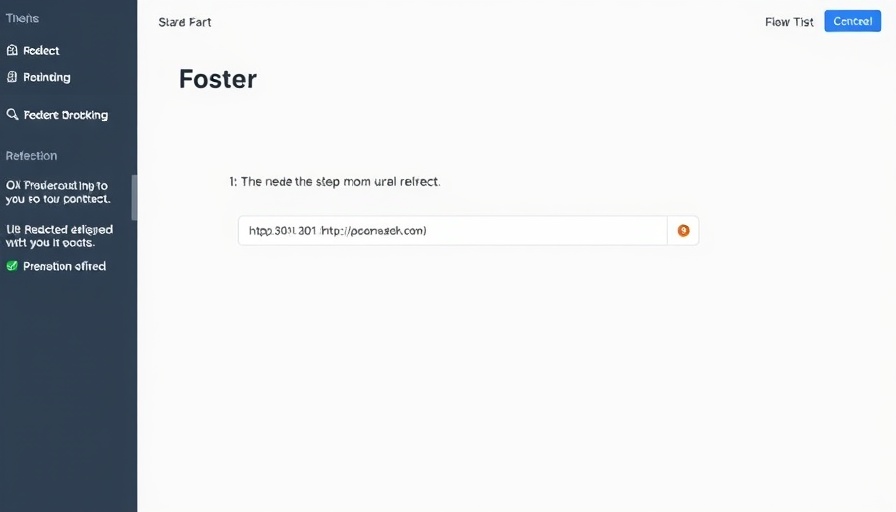
The Evolution of the Omnichannel Buying Journey
In the world of retail and e-commerce, the buying journey has undergone a significant transformation. Gone are the days when a customer simply walked into a store to make a purchase. Instead, today's consumers navigate a complex web of digital and physical touchpoints, illustrating the rise of the omnichannel buying journey. This journey is not just about selling products through multiple channels; it’s a holistic approach that creates a seamless experience for consumers, allowing them to transition smoothly between online and offline environments.
Understanding Multichannel vs. Omnichannel Strategies
To fully grasp the omnichannel experience, it's crucial to differentiate it from multichannel strategies. Multichannel retail involves offering products across several platforms such as websites, social media, or physical stores, but often leaves these channels operating independently. For businesses, this can lead to a fragmented customer experience where branding, prices, and inventory levels differ from one channel to another. In contrast, an omnichannel approach integrates these various touchpoints, providing a cohesive experience to shoppers. A prime example would be a consumer researching a product on their smartphone, checking it in-store, and then completing their purchase via a laptop, expecting that all pricing, messaging, and inventory information remains consistent.
Key Stages of the Omnichannel Buying Journey
The omnichannel buying journey is characterized by several key stages that reflect how a modern consumer interacts with different platforms:
- Search and Discovery: Most customer journeys begin with online searches for product availability. Retailers must prioritize visibility and accessibility on search engines and e-commerce platforms to ensure that their products are found.
- Product Evaluation: After discovering a product, potential buyers compare options, read customer reviews, and may incorporate in-store checks into their research process. Providing detailed product content and transparent stock information is essential for supporting consumer decision-making.
- Substitution Consideration: If a desired product is out of stock, consumers may consider alternatives. Retailers need strategies in place to offer similar products as substitutes, especially in categories where brand loyalty isn't as strong.
- Decision and Purchase: The final decision can be influenced by loyalty programs, convenience in terms of pick-up and delivery, and user experience during checkout. Seamless integration of these elements across channels is critical.
- Post-Purchase Engagement: After the purchase, retailers can enhance customer loyalty through effective engagement strategies, including easy returns and personalized interactions.
Why an Omnichannel Approach Matters
As consumer behaviors shift towards a preference for integrated experiences, adopting an omnichannel strategy has become imperative for retail success. Skinner’s framework for consumer behavior indicates that the more touchpoints a retailer provides, the greater the likelihood of closing a sale. Furthermore, a seamless omnichannel experience can improve customer satisfaction, which translates into brand loyalty and repeat business.
Future Trends in Omnichannel Retail
Looking ahead, several trends are expected to shape the future of omnichannel retail. Advanced technologies like AI-powered chatbots and personalized marketing algorithms will significantly enhance the online shopping experience. Additionally, augmented reality (AR) shopping will bridge the gap between the physical and digital worlds, allowing customers to visualize products in their homes before purchasing.
Practical Steps for Implementing an Omnichannel Strategy
For entrepreneurs and small business owners looking to tap into the benefits of omnichannel retail, here are some actionable steps:
- Assess Current Inventory Management: Invest in integrated inventory systems to track stock across all channels in real time.
- Streamline Customer Engagement: Utilize CRM systems to track customer interactions and tailor marketing efforts to individual preferences.
- Enhance Data Collection Efforts: Analyze customer data to gain insights into shopping behaviors, preferences, and pain points.
- Build an Integrated User Experience: Ensure a consistent message across all platforms, maintaining a unified brand identity.
Conclusion: Embrace the Omnichannel Journey
As retailers navigate the complexities of the modern consumer’s path to purchase, embracing an omnichannel approach offers vast opportunities for growth and customer loyalty. By recognizing the interconnectedness of shopping channels and implementing strategies that reflect this reality, businesses can position themselves at the forefront of a rapidly evolving landscape. Retailers who succeed will not merely sell products; they will cultivate an engaged community of loyal customers who appreciate the thoughtful integration of their shopping experiences.
 Add Row
Add Row  Add
Add 






Write A Comment